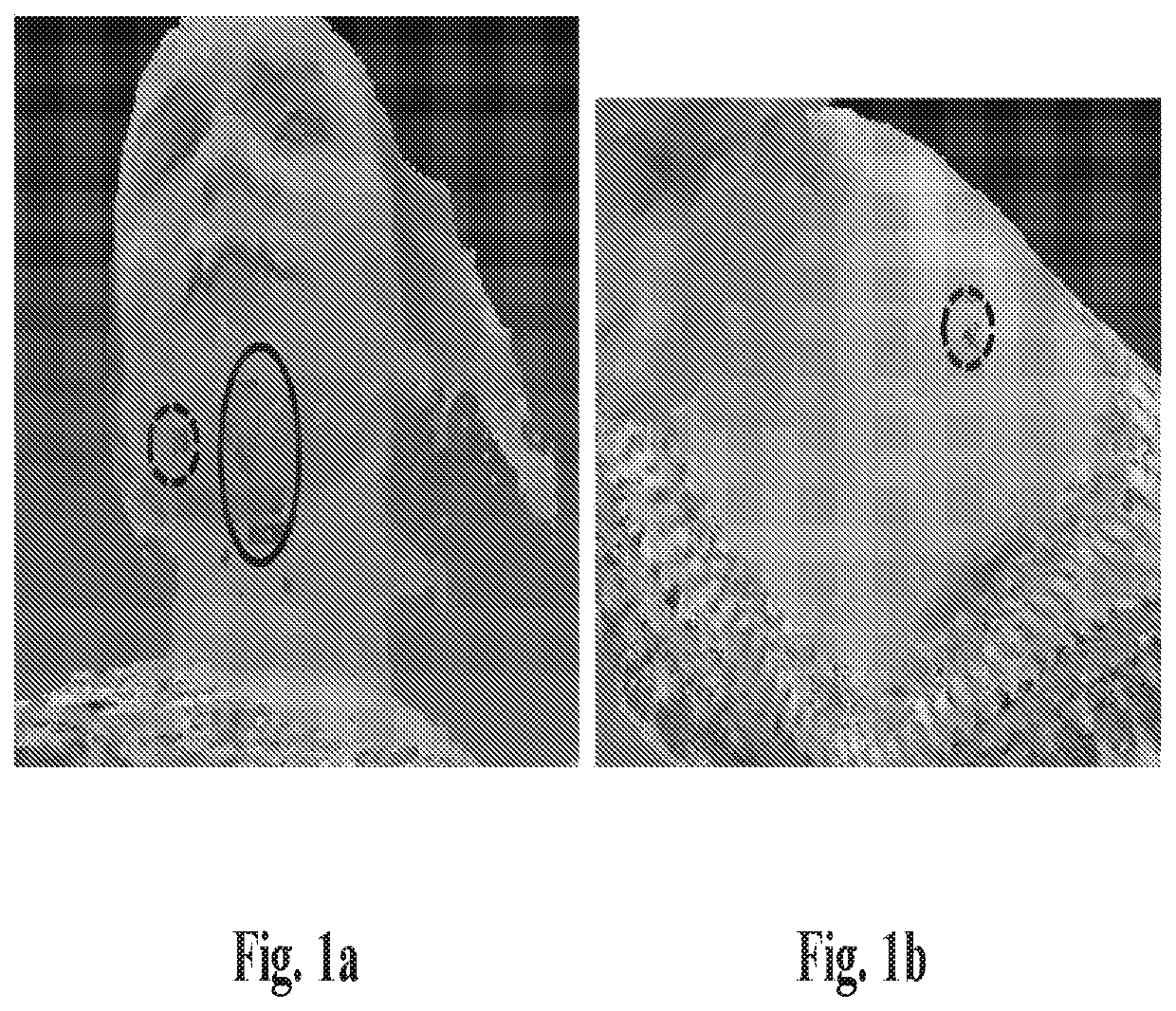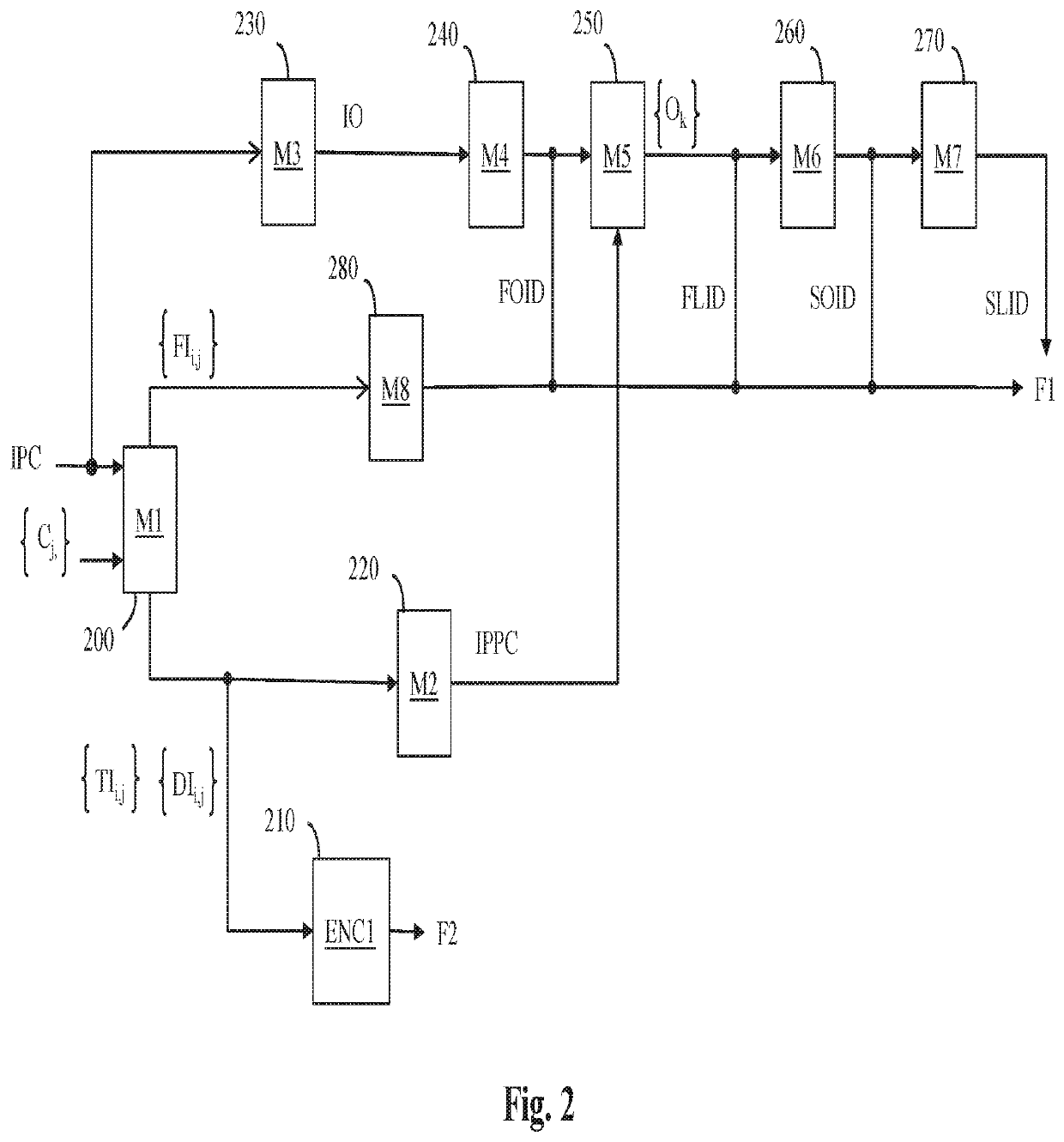Method and apparatus for reconstructing a point cloud representing a 3D object
a point cloud and object technology, applied in the field of point cloud reconstruction, can solve the problems of typical static and huge point clouds, and achieve the effect of improving the visual quality of reconstructed point clouds
- Summary
- Abstract
- Description
- Claims
- Application Information
AI Technical Summary
Benefits of technology
Problems solved by technology
Method used
Image
Examples
first embodiment
[0245]FIG. 9 is a diagram of sub-steps of the step 880 according to a
[0246]In a step 900, at least one missing part MP1 in the inverse-projected point cloud IPPC is detected.
[0247]In step 910, each missing part MPq is completed based on points in the neighborhood of said at least one missing part in order to generate a completed inverse-projected point cloud IPPC′.
[0248]In step 920, the completed inverse-projected point cloud IPPC′ and the octree-based structure GO are fused to generate the reconstructed point cloud RPC.
[0249]In step 900, the missing parts MPq are detected by first detecting boundary points of these missing parts. This requires analyzing the neighborhood of each point of IPPC,
[0250]The distance-S neighbors of a point P is defined as the neighboring points falling on a sphere or a cube whose center is P and with sphere diameter or cube scale equal to 2*S. The distance-S neighborhood of a point P(xP, yP, zP) is defined by
{Neigh(xNeigh, yNeigh, zNeigh), |xNeigh−xP|=S &...
second embodiment
[0311]The distance-1 neighborhood of each point of RPC can be completed according to a
[0312]In this second embodiment, instead of checking the distance-1 neighborhood of each existing point (first embodiment), the distance-1 neighborhood of each non-occupied position is checked. Denote each non-occupied occupied position as PUnOccup(xUnOccup, yUnOccup, zUnOccup).
[0313]For each PUnOccup, check the number of its distance 1 neighbors in the current point cloud, which is denoted as KPUnOccup1. If KPUnOccup1 is within a reasonable range, in the other words, less than the usual value of KP1 when the distance 1 neighborhood of P is complete and greater than a lower bound, PUnOccup is possible to be a new point and be added to the point cloud. In this case, PUnOccup is further checked. That is to say, if TUnOccup1aPUnOccup1UnOccup1b, PUnOccup is further checked. Otherwise, PUnOccup is not further checked. The possible values are TUnOccup1a=13 and TUnOccup1b=5.
[0314]If PUnOccup is further ch...
PUM
 Login to View More
Login to View More Abstract
Description
Claims
Application Information
 Login to View More
Login to View More - R&D
- Intellectual Property
- Life Sciences
- Materials
- Tech Scout
- Unparalleled Data Quality
- Higher Quality Content
- 60% Fewer Hallucinations
Browse by: Latest US Patents, China's latest patents, Technical Efficacy Thesaurus, Application Domain, Technology Topic, Popular Technical Reports.
© 2025 PatSnap. All rights reserved.Legal|Privacy policy|Modern Slavery Act Transparency Statement|Sitemap|About US| Contact US: help@patsnap.com



